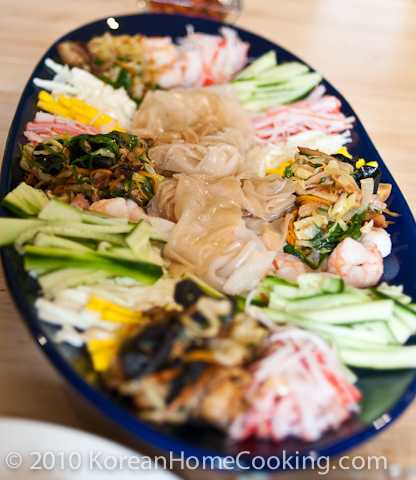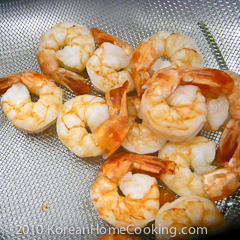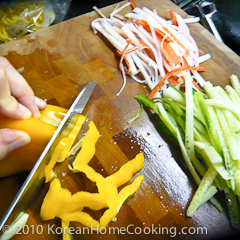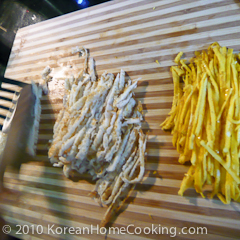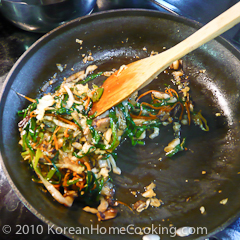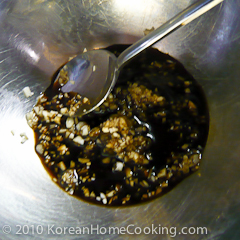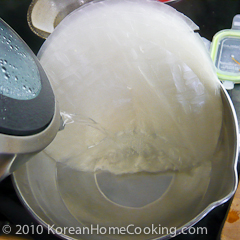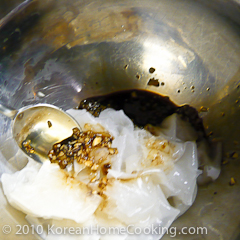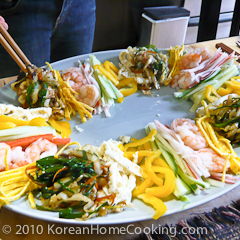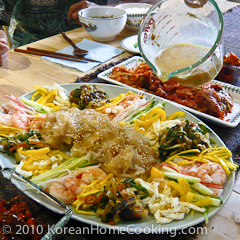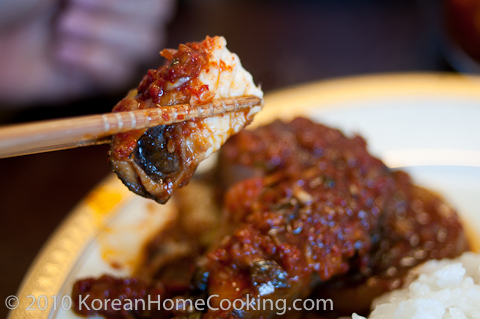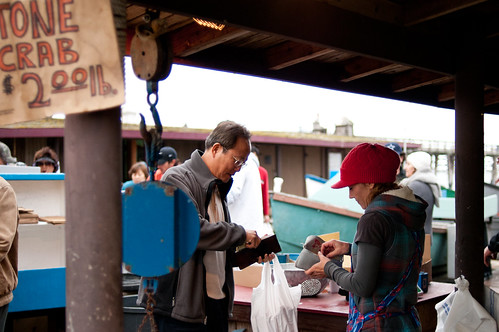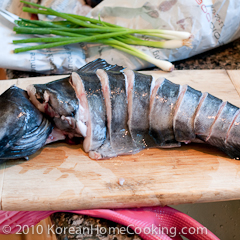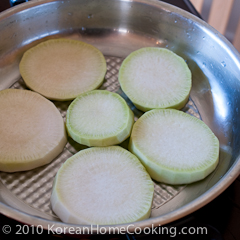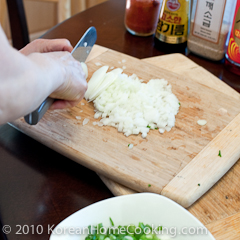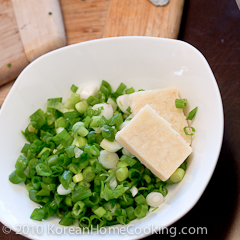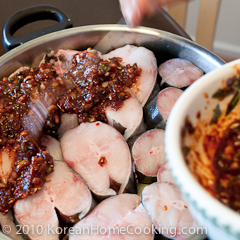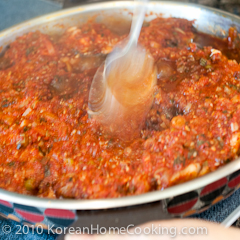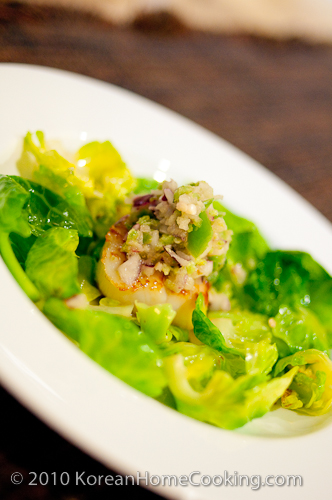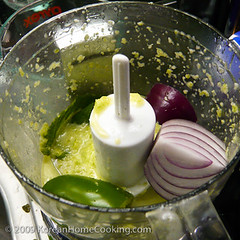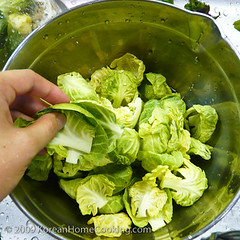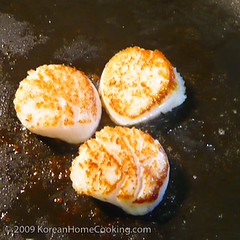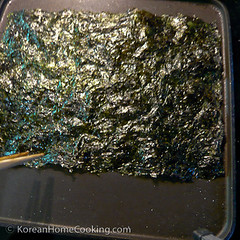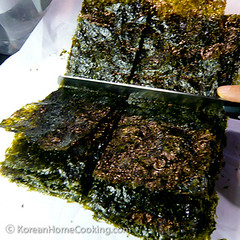
Sorry for the delay with updating this blog. No excuse except that I just can't remember how the last two months flew by so quickly. As a Korean saying goes, it feels like all things happened in a blink of an eye. Since this is the first blog post for this year, I would like to send a belated wish to everyone a very happy new year! I am sure hearing new year's greeting at this time of the year would again make you think how time had simply jumped from the new year's day.
The weather in the San Francisco Bay Area has been very unpredictable for the past few weeks. We planned a weekend getaway to Monterey in anticipation of nice spring weather, but the weather forecast showed rain and windy so we had to cancel the trip. Then I woke up on Saturday morning only to find a bright sun light on my eyes. So, I was itching to make it a fun-filled weekend regardless of the weather, and decided to throw a house party with friends savoring our 10-legged crustacean friends that thrives in the northern California coast around this time of the year.


We invited about 10 guests and bought 11 Dungeness crabs, of which we dunked two into soybean soup and steamed the rest to make crab bibimbop. Both of them were big hits. To make crab bibimbop, you first steam crabs upside down (so that the juice stays in the back shell), crack open the shell, and add steamed rice, dry seaweed, a teaspoon of sesame oil and a pinch of sesame seeds into the shell, and then mix them together. This gets you an instant bibimbop right in the crab shell that is full of ocean flavor.
To complement the crab bibimbop, I also made crab soybean soup which is a popular delicacy in Korea. The combination of soybean paste and crabs is surprisingly delectable with a hint of fresh ocean aroma. Here is how you make it.
Ingredients for 4 servings
Stock:
anchovy (7-8, medium to large size)
dry kelp (3"x3")
water (10 cups)
Sauce:
soybean paste (1 tbl)
chili paste (1 tsp)
chili powder (1/2 tbl)
water (1/2 cup)
minced garlic (1 tbl)
ground ginger (1 tsp)
salt (1/2 tbl)
pepper (1/3 tsp)
Other:
Dungeness crab (1)
daikon radish (1/2)
kabocha (1/4)
zuchini (1/2)
Korean leek and or green onion (1 stalk)
green and red peppers to taste (2 each)
1.
 Make anchovy stock by boiling dry anchovies and dry kelp (kombu) in water. Fish out kombu when the water starts boiling and anchovies about 5 minutes later.
Make anchovy stock by boiling dry anchovies and dry kelp (kombu) in water. Fish out kombu when the water starts boiling and anchovies about 5 minutes later.2.
 While the stock is underway on your stovetop, make a mixture of soybean and chili pastes, chili powsder and fresh ground ginger (see ingredients for sauce above).
While the stock is underway on your stovetop, make a mixture of soybean and chili pastes, chili powsder and fresh ground ginger (see ingredients for sauce above).3.
 Add soybean/chili paste mixture from Step 3 to the anchovy stock from Step 1.
Add soybean/chili paste mixture from Step 3 to the anchovy stock from Step 1.4.
 Slice daikon radish into 1/8" thick and about 1/2" square.
Slice daikon radish into 1/8" thick and about 1/2" square.5.
 Add sliced daikon radish from Step 5 into soybean paste stock from Step 4 and boil for about 5 minutes until they are softened.
Add sliced daikon radish from Step 5 into soybean paste stock from Step 4 and boil for about 5 minutes until they are softened.6.
 Prepare other vegetables that usually go into soybean paste soup. I have kabocha and zuchini.
Prepare other vegetables that usually go into soybean paste soup. I have kabocha and zuchini.7.
 Slice green and red peppers and some Korean leek/green onion for garnish.
Slice green and red peppers and some Korean leek/green onion for garnish.8.
 Add fresh crabs that are washed and cracked in 4 parts. Skim off the foam as it develops.
Add fresh crabs that are washed and cracked in 4 parts. Skim off the foam as it develops.9.
 Add remaining vegetables and boil for 5 and then add scallion and pepper to garnish and then boil for another 2 to 3 minutes. Be sure not to overcook it, otherwise the shells will get too soft.
Add remaining vegetables and boil for 5 and then add scallion and pepper to garnish and then boil for another 2 to 3 minutes. Be sure not to overcook it, otherwise the shells will get too soft.
